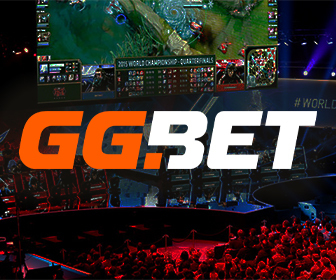By 2025, blockchain games will be more than a trend. They have developed into fully realized experiences that emphasize creativity, fun, and gameplay rather than just tokens and rewards. Leading the way now are games like Illuvium, Big Time, and Shrapnel, which provide players with thoughtfully planned adventures that also incorporate cryptocurrency features.
In 2024, the blockchain gaming market was valued at $13 billion, according to Grand View Research. Additionally, it is anticipated to reach a staggering $301 billion by 2030, growing at a rate of 69.4% annually. According to a different report, IMARC Group predicts the market is expected to reach $24.4 billion in 2025. These figures demonstrate that players, investors, and developers alike are becoming more confident.
Play-to-Earn: Transitioning from Free Tokens to Rewards Based on Skills
Play-to-earn (P2E) games were extremely popular in the early days of cryptocurrency. By simply clicking around or logging in, players could earn tokens. However, the P2E model is evolving in 2025.
Today’s games combine blockchain-based ownership with conventional progression systems. This implies that while you can still grind and level up like in other games, you also actually own your rewards and items. Nowadays, a lot of games have adaptable systems with rewards based on skill, judgement, and community involvement.
According to Atlas Games, the latest P2E trend is more skill-based. Gamers can vote on how the game progresses, stake their tokens, and receive rewards based on their performance. Many trusted Bitcoin gambling websites accept more than 20 different cryptocurrencies, which also provide quicker payouts and use transparent, provably fair systems to foster trust.
It is evident that players now possess in-game items in the form of NFTs. Depending on the game economy, these may increase or decrease in value. P2E has evolved into more than just a game in some regions, particularly in parts of Asia, Africa, and Latin America, offering a chance to generate passive income.
Player Power in Community-Driven Worlds
Decentralized governance is one of the most significant changes brought about by Web3 gaming. Players can vote on how games are operated with the aid of DAOs (Decentralised Autonomous Organisations). They have a say in in-game economies, new content, and game updates.
According to blockchain development firm Cubix, this strategy is changing the game-making process. Players now have a genuine say in what happens next rather than being passive consumers. They contribute to bug fixes, feature suggestions, and game development.
Because players are now more than just users, communities become stronger and more devoted. They make decisions and have a stake in the business.
Interoperability and the Metaverse: A Common Digital Environment
The metaverse, a networked digital world where your identity and possessions can flow freely between games, is being built in part by cryptocurrency gaming by 2025, allowing players to track the value of their digital assets like PEPE to USD. Players can use the same pet, outfit, or sword in multiple games because of interoperability tools like Polkadot and Cosmos.
People can already purchase virtual land, start businesses, and exchange digital assets through platforms like The Sandbox and Decentraland. These platforms make it difficult to distinguish between in-game tokens and cryptocurrencies. However, in-game tokens can be traded, bought, or sold for cryptocurrencies, indicating true ownership of digital assets across platforms and exchanges.
McKinsey-supported reports show how these virtual assets flow across platforms to form a network of interconnected, rich worlds. Additionally, thousands of players can engage in real-time interaction in brand-new MMO-style metaverses like Chunked from Improbable, where every action is safely recorded on the blockchain.
Blockchain Gaming’s New Technology Is Smarter, Faster, and Better
Gas fees and lagging transactions used to make running blockchain games costly and slow. However, things are considerably more seamless in 2025. Transactions are now quick and inexpensive thanks to Layer-2 solutions like rollups and sidechains, which are ideal for action-packed video games.
Account abstraction is another useful improvement. For regular players, this technology makes games feel more like classic titles by concealing the intricate crypto processes that go on behind the scenes.
The game is also being changed by artificial intelligence. AI is being used by developers to balance gameplay, produce smarter in-game characters, and accelerate development. To make interactions in blockchain games feel more organic and human, some are even investigating AI agents driven by large language models (LLMs).
Large Studios Are Observing, And Taking Part
Blockchain is now receiving a lot of attention from big gaming companies. Some are actually already conducting experiments.
NFTs are used to gain access to the game Captain Laserhawk: The G.A.M.E., which was released by Ubisoft. However, due to previous criticism regarding NFTs in gaming, the release was made in a low-key manner. However, it demonstrates that even the most well-known companies are experimenting with blockchain technology.
Zynga and Square Enix are also dabbling in cryptocurrency. Industry insiders say they are working behind the scenes to determine the best way to integrate blockchain with traditional gaming, even though they haven’t made any significant public announcements yet.
One of the most well-known brands on Web3 is Animoca Brands. The company, which is valued at about $6 billion, is getting ready for a U.S. initial public offering (IPO) in order to further enter the blockchain game market.

